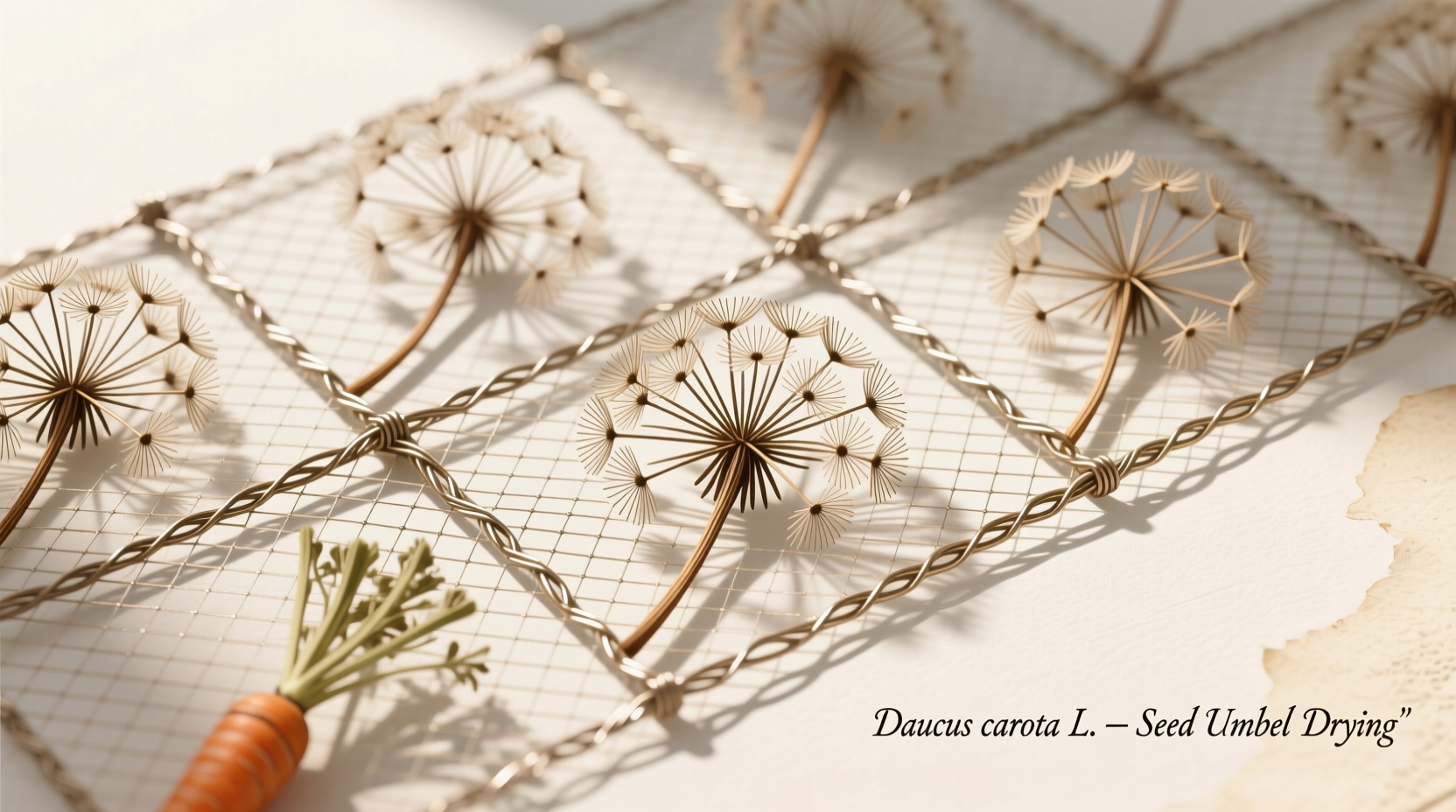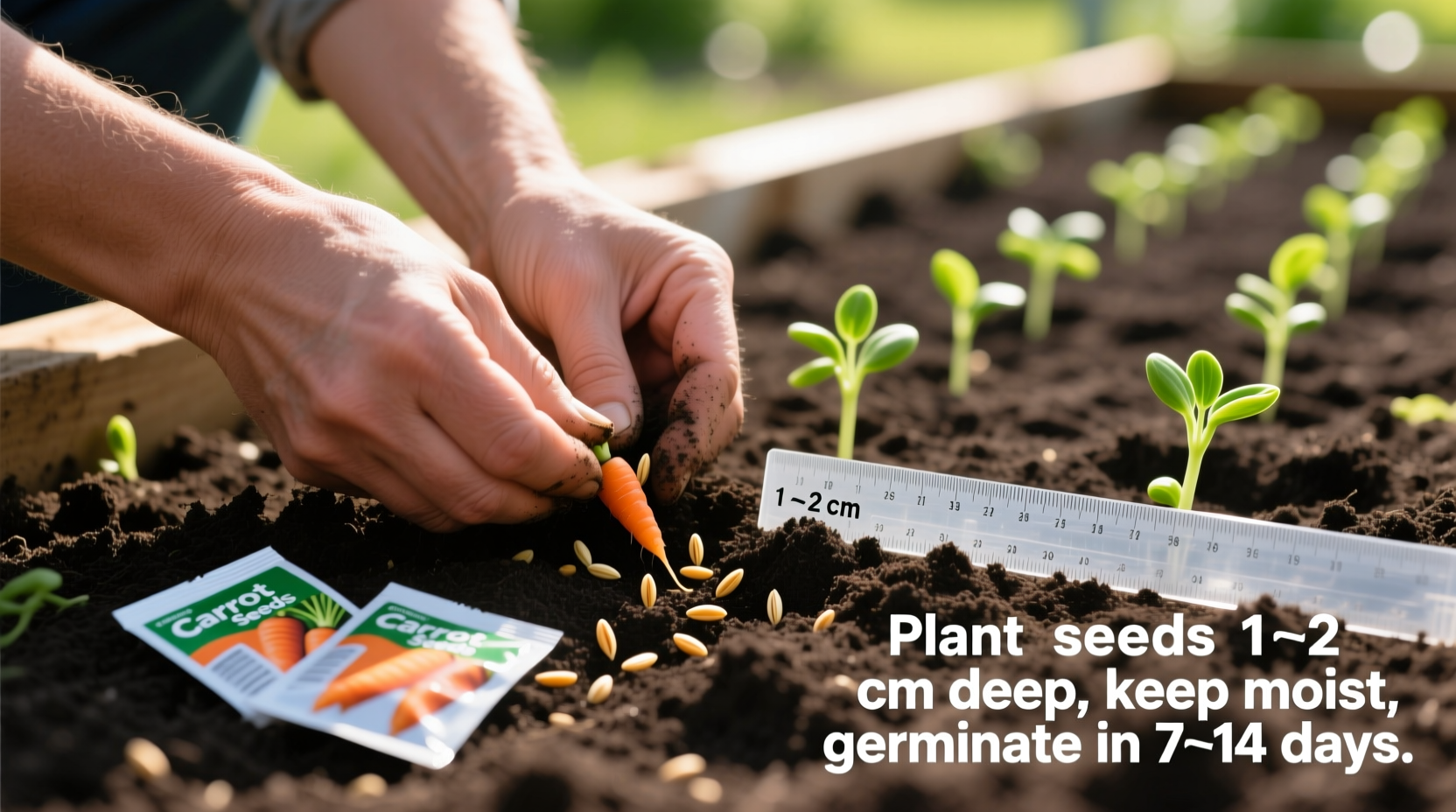Whether you're planning your first garden or expanding your seed-saving skills, understanding how to get quality carrot seeds is essential for successful harvests. This guide provides actionable methods backed by agricultural science to ensure you have viable seeds for planting.
Why Carrot Seeds Require Special Attention
Unlike many annual vegetables, carrots are biennial plants—they complete their life cycle over two growing seasons. In the first year, they develop the edible root we harvest. Seed production only occurs in the second year when the plant sends up a flowering stalk. This biological characteristic fundamentally shapes how you obtain carrot seeds.
| Seed Source | Best For | Time Required | Genetic Reliability |
|---|---|---|---|
| Home Harvested Seeds | Experienced gardeners in suitable climates | 2 growing seasons | Variable (open-pollinated) |
| Purchased Seeds | Most gardeners, beginners | Ready to plant | Guaranteed (check variety type) |
Method 1: Harvesting Seeds From Your Garden
This approach works best in USDA hardiness zones 3-10 where carrots can overwinter. The USDA Seeds of Success program confirms that proper seed harvesting requires understanding the plant's natural development cycle.
Step-by-Step Harvesting Process
- Select parent plants: Choose healthy, disease-free carrots with desirable traits in late summer of the first growing season
- Overwintering: In colder climates, mulch heavily (6-8 inches) to protect roots; in milder zones, plants can remain in ground
- Second season growth: In spring, plants send up tall flowering stalks (up to 4 feet) with umbrella-shaped clusters called umbels
- Monitor maturity: Seeds turn from green to brown/tan when ready (typically late summer)
- Harvest technique: Cut umbels when 70-80% of seeds have turned color but before they shatter (fall off)
- Dry thoroughly: Spread umbels in single layer on screens in well-ventilated area for 2-3 weeks
- Threshing: Rub dried umbels between hands to release seeds, then winnow to remove chaff
Carrot Seed Development Timeline
Understanding this progression prevents premature harvesting:
- Spring (Year 2): Flowering stalk emergence
- Early Summer: Umbel formation and flowering
- Mid-Summer: Pollination (primarily by insects)
- Late Summer: Seed development and maturation
- Early Fall: Optimal harvest window
Method 2: Purchasing Quality Carrot Seeds
For most gardeners, buying seeds provides immediate results with guaranteed genetics. The University of Minnesota Extension recommends considering these factors when purchasing:
What to Look for in Quality Seeds
- Seed packet information: Check for harvest year (seeds remain viable 2-3 years), germination rate (should be 75%+), and variety details
- Organic certification: Look for USDA Organic seal if avoiding treated seeds
- Heirloom vs. hybrid: Heirlooms breed true but may have less disease resistance; hybrids offer specific traits but won't reproduce reliably
- Regional adaptation: Choose varieties tested for your climate zone
Top Seed Sources Compared
Reputable suppliers provide detailed growing information and quality control:
- Local nurseries: Best for regionally adapted varieties; allows physical inspection
- Specialty seed companies: Offer diverse heirloom varieties (check Seed Savers Exchange for non-hybrid options)
- Agricultural cooperatives: Often provide bulk options for serious growers
- Online retailers: Convenient but verify return policies for non-viable seeds

Proper Seed Storage Techniques
Whether harvested or purchased, proper storage maintains viability. According to USDA National Plant Germplasm System standards, carrot seeds require specific conditions:
- Moisture control: Store seeds at 20-30% relative humidity
- Temperature: Ideal range is 32-41°F (0-5°C) for long-term storage
- Container: Airtight glass or metal containers with silica gel packets
- Labeling: Include variety, harvest date, and source
- Viability testing: Conduct a germination test before planting season
Common Challenges and Solutions
Carrot seed production has specific limitations you should understand:
- Cross-pollination issues: Carrots readily cross with wild relatives (Queen Anne's Lace); maintain 1/4 mile isolation distance for pure seeds
- Climate limitations: In zones below 3, overwintering requires greenhouse protection; above zone 10, vernalization may be insufficient
- Disease transmission: Never save seeds from diseased plants; practice crop rotation
- Hybrid varieties: F1 hybrids won't produce true-to-type offspring—only save seeds from open-pollinated varieties
When to Choose Harvesting vs. Purchasing
Your decision should consider these practical factors:
- Choose harvesting if: You have 2+ growing seasons to dedicate, want to preserve specific traits, and live in suitable climate
- Choose purchasing if: You need immediate results, grow hybrids, or lack space for overwintering plants
- Best compromise: Buy seeds initially while starting your own seed-saving project for future seasons
Final Tips for Success
Implement these professional techniques for optimal results:
- Mark your best plants with colored tags during first season for easy identification
- For purchased seeds, check for recent harvest dates—older seeds have lower germination rates
- Store seeds away from light to prevent premature germination signaling
- Test germination rates annually—discard seeds with rates below 60%











 浙公网安备
33010002000092号
浙公网安备
33010002000092号 浙B2-20120091-4
浙B2-20120091-4